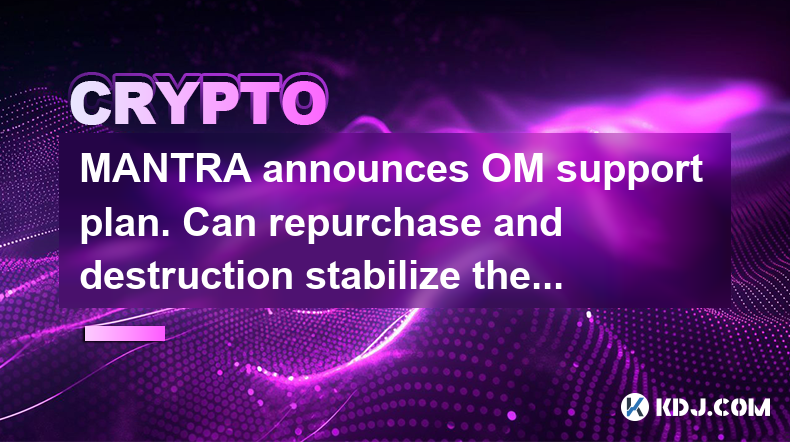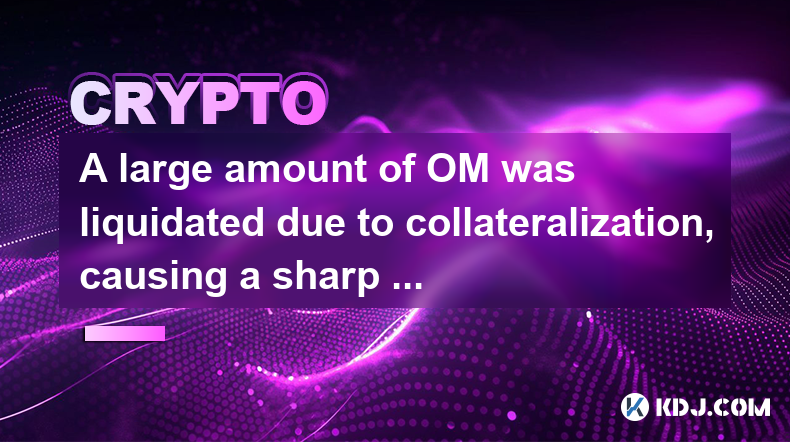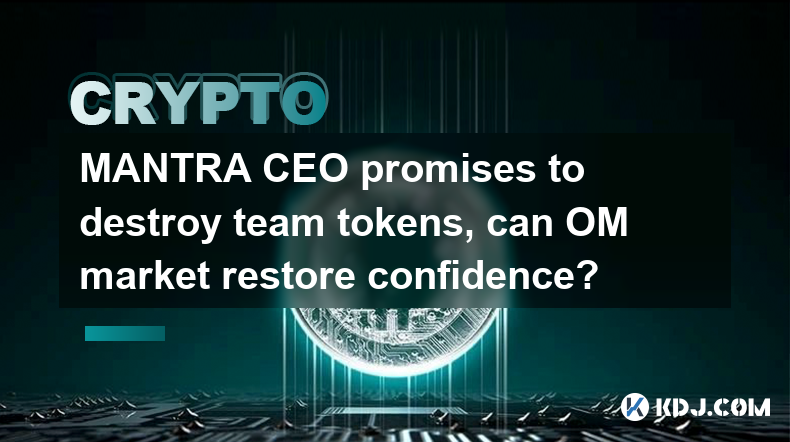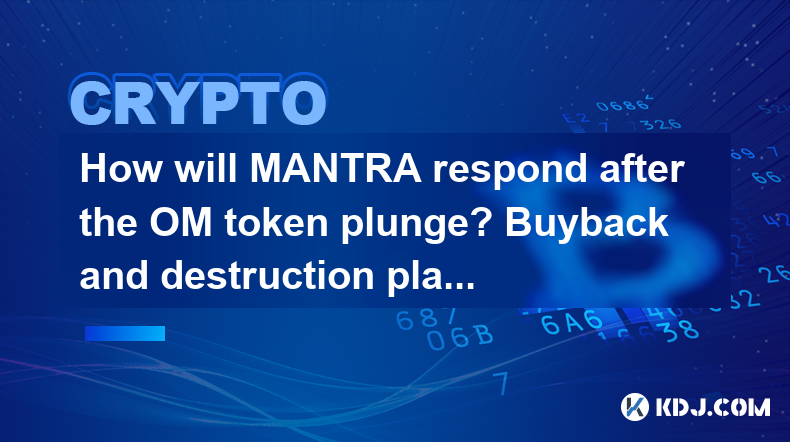-
 Bitcoin
Bitcoin $87,772.6996
0.99% -
 Ethereum
Ethereum $1,570.5330
-2.49% -
 Tether USDt
Tether USDt $1.0000
0.01% -
 XRP
XRP $2.0836
-1.10% -
 BNB
BNB $599.1765
0.07% -
 Solana
Solana $138.0201
-2.11% -
 USDC
USDC $0.9999
0.01% -
 Dogecoin
Dogecoin $0.1599
0.63% -
 TRON
TRON $0.2467
0.31% -
 Cardano
Cardano $0.6233
-1.67% -
 Chainlink
Chainlink $13.1154
-2.78% -
 UNUS SED LEO
UNUS SED LEO $9.1017
-1.66% -
 Avalanche
Avalanche $19.7493
-1.09% -
 Stellar
Stellar $0.2496
0.02% -
 Toncoin
Toncoin $2.9084
-3.65% -
 Shiba Inu
Shiba Inu $0.0...01230
-2.09% -
 Sui
Sui $2.2248
2.27% -
 Hedera
Hedera $0.1694
-0.70% -
 Bitcoin Cash
Bitcoin Cash $342.3982
0.49% -
 Hyperliquid
Hyperliquid $18.1794
-0.12% -
 Litecoin
Litecoin $78.6773
-0.19% -
 Polkadot
Polkadot $3.7586
-4.30% -
 Dai
Dai $0.9998
-0.02% -
 Bitget Token
Bitget Token $4.4381
-1.01% -
 Ethena USDe
Ethena USDe $0.9992
0.01% -
 Pi
Pi $0.6309
-1.94% -
 Monero
Monero $214.9808
-0.07% -
 Uniswap
Uniswap $5.2523
-2.33% -
 Pepe
Pepe $0.0...07838
1.42% -
 OKB
OKB $50.7171
-0.70%
How do Bitcoin payment platforms deal with transaction congestion and high transaction fees?
Bitcoin payment platforms use transaction batching, fee optimization, and off-chain solutions like the Lightning Network to manage congestion and high fees effectively.
Apr 21, 2025 at 04:36 am

Bitcoin payment platforms face significant challenges when dealing with transaction congestion and high transaction fees. These issues arise primarily due to the limited block size and the increasing demand for Bitcoin transactions. To address these problems, various strategies and technologies have been implemented by payment platforms. This article will explore how these platforms manage transaction congestion and high fees, providing a detailed look at the mechanisms and solutions in place.
Understanding Transaction Congestion
Transaction congestion occurs when the number of pending transactions exceeds the capacity of the Bitcoin network to process them within a reasonable timeframe. This is largely due to the fixed block size limit of 1 MB, which can only accommodate a certain number of transactions per block. When the network is congested, transactions can take hours or even days to be confirmed, which is problematic for users and businesses relying on timely transactions.
To mitigate this, Bitcoin payment platforms employ several strategies. One common approach is transaction batching, where multiple transactions are combined into a single transaction. This reduces the number of transactions that need to be processed, thereby alleviating some of the congestion. Platforms also prioritize transactions based on their fee rate, ensuring that higher-fee transactions are processed more quickly.
Managing High Transaction Fees
High transaction fees are another significant issue for Bitcoin payment platforms. Fees are determined by the market dynamics of supply and demand for block space. During periods of high demand, users must pay higher fees to have their transactions processed promptly. This can be particularly burdensome for small transactions, where the fee might exceed the transaction amount itself.
To address high fees, payment platforms often implement fee optimization techniques. One such technique is dynamic fee adjustment, where the platform automatically adjusts the fee based on current network conditions. This ensures that transactions are processed as quickly as possible without overpaying. Additionally, platforms may use fee estimation algorithms to predict the minimum fee required for timely transaction confirmation, helping users avoid unnecessary costs.
Implementing Off-Chain Solutions
To further alleviate the issues of congestion and high fees, many Bitcoin payment platforms have turned to off-chain solutions. One of the most popular off-chain solutions is the Lightning Network. The Lightning Network allows for instant, low-cost transactions by conducting them off the main Bitcoin blockchain. Transactions are only settled on the blockchain when necessary, significantly reducing the load on the network and the associated fees.
To use the Lightning Network, users must first open a payment channel with another party. Here's how to set up a Lightning Network channel:
- Choose a Lightning Network wallet: Select a wallet that supports the Lightning Network, such as Eclair, LND, or c-lightning.
- Fund the wallet: Transfer Bitcoin to the wallet to be used for opening channels.
- Open a channel: Use the wallet to open a payment channel with another party. This involves sending a transaction to the blockchain to lock funds in the channel.
- Conduct transactions: Once the channel is open, you can send and receive payments instantly and at a low cost.
- Close the channel: When you're done, close the channel to settle the final balance on the blockchain.
Utilizing Segregated Witness (SegWit)
Another solution implemented by Bitcoin payment platforms to address transaction congestion and high fees is Segregated Witness (SegWit). SegWit is a protocol upgrade that separates the signature data from the transaction data, allowing more transactions to fit into each block. This increases the effective block size and reduces the fees required for transactions.
To take advantage of SegWit, platforms must ensure that their infrastructure supports SegWit transactions. Here's how to enable SegWit on a Bitcoin wallet:
- Choose a SegWit-compatible wallet: Select a wallet that supports SegWit, such as Electrum or Bitcoin Core.
- Generate a SegWit address: Use the wallet to generate a SegWit address, which typically starts with "bc1" or "3".
- Send and receive transactions: Use the SegWit address for sending and receiving transactions, which will automatically benefit from lower fees and faster processing.
Leveraging Transaction Acceleration Services
Some Bitcoin payment platforms offer transaction acceleration services to help users bypass congestion and high fees. These services work by paying higher fees on behalf of the user to expedite transaction processing. While this can be an effective solution, it often comes at an additional cost to the user.
To use a transaction acceleration service, follow these steps:
- Select a platform offering acceleration services: Choose a platform that provides transaction acceleration, such as ViaBTC or BTC.com.
- Submit the transaction ID: Provide the transaction ID of the transaction you want to accelerate.
- Pay the acceleration fee: The platform will charge an additional fee to prioritize your transaction.
- Monitor the transaction: Keep an eye on the transaction status to ensure it is processed quickly.
Conclusion
Bitcoin payment platforms employ a variety of strategies to manage transaction congestion and high transaction fees. By implementing transaction batching, fee optimization, off-chain solutions like the Lightning Network, SegWit, and transaction acceleration services, these platforms can provide a more efficient and cost-effective experience for users. Understanding these mechanisms is crucial for anyone involved in Bitcoin transactions, as they directly impact the usability and cost of using Bitcoin as a payment method.
Frequently Asked Questions
Q: Can transaction congestion affect the security of Bitcoin transactions?
A: Transaction congestion itself does not directly affect the security of Bitcoin transactions. However, it can lead to longer confirmation times, which might increase the risk of double-spending attacks if transactions are not adequately protected. Using higher fees or off-chain solutions can mitigate these risks.
Q: Are there any alternatives to Bitcoin that handle transaction congestion and fees better?
A: Yes, several cryptocurrencies have been designed to address these issues more effectively. For example, Bitcoin Cash (BCH) has a larger block size, which can handle more transactions per block, reducing congestion and fees. Ethereum also offers faster transaction processing through its upcoming upgrades.
Q: How can businesses using Bitcoin payment platforms minimize the impact of high fees on their operations?
A: Businesses can minimize the impact of high fees by implementing strategies such as batching transactions, using the Lightning Network for smaller transactions, and optimizing fees through dynamic adjustment. Additionally, they can consider using alternative cryptocurrencies with lower fees for certain transactions.
Q: What role do miners play in transaction congestion and fees?
A: Miners play a crucial role in transaction congestion and fees as they prioritize transactions based on the fees attached. Higher fees incentivize miners to include transactions in the next block, which can help alleviate congestion. However, this also contributes to the overall increase in fees during peak times.
Disclaimer:info@kdj.com
The information provided is not trading advice. kdj.com does not assume any responsibility for any investments made based on the information provided in this article. Cryptocurrencies are highly volatile and it is highly recommended that you invest with caution after thorough research!
If you believe that the content used on this website infringes your copyright, please contact us immediately (info@kdj.com) and we will delete it promptly.
- Meteora Labs sued by investors over alleged M3M3 token price manipulation
- 2025-04-22 09:40:12
- This is a published version of our weekly Forbes Crypto Confidential newsletter. Sign up here to get Crypto Confidential days earlier free in your inbox.
- 2025-04-22 09:40:12
- Trump Token Unlocks Are When a Group of People—Usually Project Team Members, Early Investors or Advisors—Receive Their Allocated Tokens
- 2025-04-22 09:35:14
- Meme cryptocurrency Dogecoin is currently trading at an important support level against Bitcoin
- 2025-04-22 09:35:14
- Dogecoin (DOGE) Price Broke Out of Two Technical Patterns, Setting the Stage for a Bullish Run
- 2025-04-22 09:30:12
- Mutuum Finance (MUTM) Presale Raises Over $7M From 8400+ Buyers
- 2025-04-22 09:30:12
Related knowledge

All MANTRA team tokens are locked, why did OM still experience a sharp drop?
Apr 20,2025 at 11:14am
Introduction to MANTRA and OM TokenThe MANTRA project is a blockchain platform that aims to provide a scalable and secure environment for decentralized applications (dApps). The native token of the MANTRA ecosystem is OM, which plays a crucial role in governance, staking, and other functionalities within the platform. Recently, the MANTRA team announced...

MANTRA announces OM support plan. Can repurchase and destruction stabilize the currency price?
Apr 21,2025 at 01:57pm
MANTRA, a notable player in the cryptocurrency ecosystem, has recently announced an OM support plan that includes mechanisms for repurchasing and destroying tokens. This move has sparked significant interest and discussion within the crypto community, particularly around its potential impact on the stability of the OM token's price. In this article, we ...

A large amount of OM was liquidated due to collateralization, causing a sharp drop? MANTRA analyzes the reasons for the market turmoil
Apr 21,2025 at 01:57am
The cryptocurrency market is known for its volatility, and sharp price movements can often be attributed to a variety of factors. Recently, a large amount of OM (Mantra DAO's native token) was liquidated due to collateralization issues, leading to significant market turmoil. In this article, MANTRA analyzes the reasons behind this event and the subseque...

MANTRA CEO promises to destroy team tokens, can OM market restore confidence?
Apr 21,2025 at 08:28am
The recent announcement from the CEO of MANTRA about destroying team tokens has sparked a wave of discussions within the cryptocurrency community. This move is seen as a strategic effort to restore confidence in the OM market, which has been facing various challenges. The decision to burn team tokens is not just a simple action; it involves a series of ...

How will MANTRA respond after the OM token plunge? Buyback and destruction plan revealed
Apr 19,2025 at 11:42pm
The recent plunge in the OM token price has left many investors and enthusiasts of the MANTRA ecosystem concerned about the future stability and value of their holdings. In response to these market fluctuations, MANTRA has announced a comprehensive buyback and destruction plan aimed at restoring confidence and supporting the long-term health of the OM t...

Did the MANTRA team sell off OM tokens? Official statement clarifies the lock-up situation
Apr 19,2025 at 10:56pm
The recent buzz around the MANTRA project and its native token, OM, has led to speculation and concerns within the cryptocurrency community about whether the MANTRA team has sold off their OM tokens. To address these concerns and clarify the situation, the MANTRA team has released an official statement detailing the lock-up situation of their tokens. Th...

All MANTRA team tokens are locked, why did OM still experience a sharp drop?
Apr 20,2025 at 11:14am
Introduction to MANTRA and OM TokenThe MANTRA project is a blockchain platform that aims to provide a scalable and secure environment for decentralized applications (dApps). The native token of the MANTRA ecosystem is OM, which plays a crucial role in governance, staking, and other functionalities within the platform. Recently, the MANTRA team announced...

MANTRA announces OM support plan. Can repurchase and destruction stabilize the currency price?
Apr 21,2025 at 01:57pm
MANTRA, a notable player in the cryptocurrency ecosystem, has recently announced an OM support plan that includes mechanisms for repurchasing and destroying tokens. This move has sparked significant interest and discussion within the crypto community, particularly around its potential impact on the stability of the OM token's price. In this article, we ...

A large amount of OM was liquidated due to collateralization, causing a sharp drop? MANTRA analyzes the reasons for the market turmoil
Apr 21,2025 at 01:57am
The cryptocurrency market is known for its volatility, and sharp price movements can often be attributed to a variety of factors. Recently, a large amount of OM (Mantra DAO's native token) was liquidated due to collateralization issues, leading to significant market turmoil. In this article, MANTRA analyzes the reasons behind this event and the subseque...

MANTRA CEO promises to destroy team tokens, can OM market restore confidence?
Apr 21,2025 at 08:28am
The recent announcement from the CEO of MANTRA about destroying team tokens has sparked a wave of discussions within the cryptocurrency community. This move is seen as a strategic effort to restore confidence in the OM market, which has been facing various challenges. The decision to burn team tokens is not just a simple action; it involves a series of ...

How will MANTRA respond after the OM token plunge? Buyback and destruction plan revealed
Apr 19,2025 at 11:42pm
The recent plunge in the OM token price has left many investors and enthusiasts of the MANTRA ecosystem concerned about the future stability and value of their holdings. In response to these market fluctuations, MANTRA has announced a comprehensive buyback and destruction plan aimed at restoring confidence and supporting the long-term health of the OM t...

Did the MANTRA team sell off OM tokens? Official statement clarifies the lock-up situation
Apr 19,2025 at 10:56pm
The recent buzz around the MANTRA project and its native token, OM, has led to speculation and concerns within the cryptocurrency community about whether the MANTRA team has sold off their OM tokens. To address these concerns and clarify the situation, the MANTRA team has released an official statement detailing the lock-up situation of their tokens. Th...
See all articles






















































































